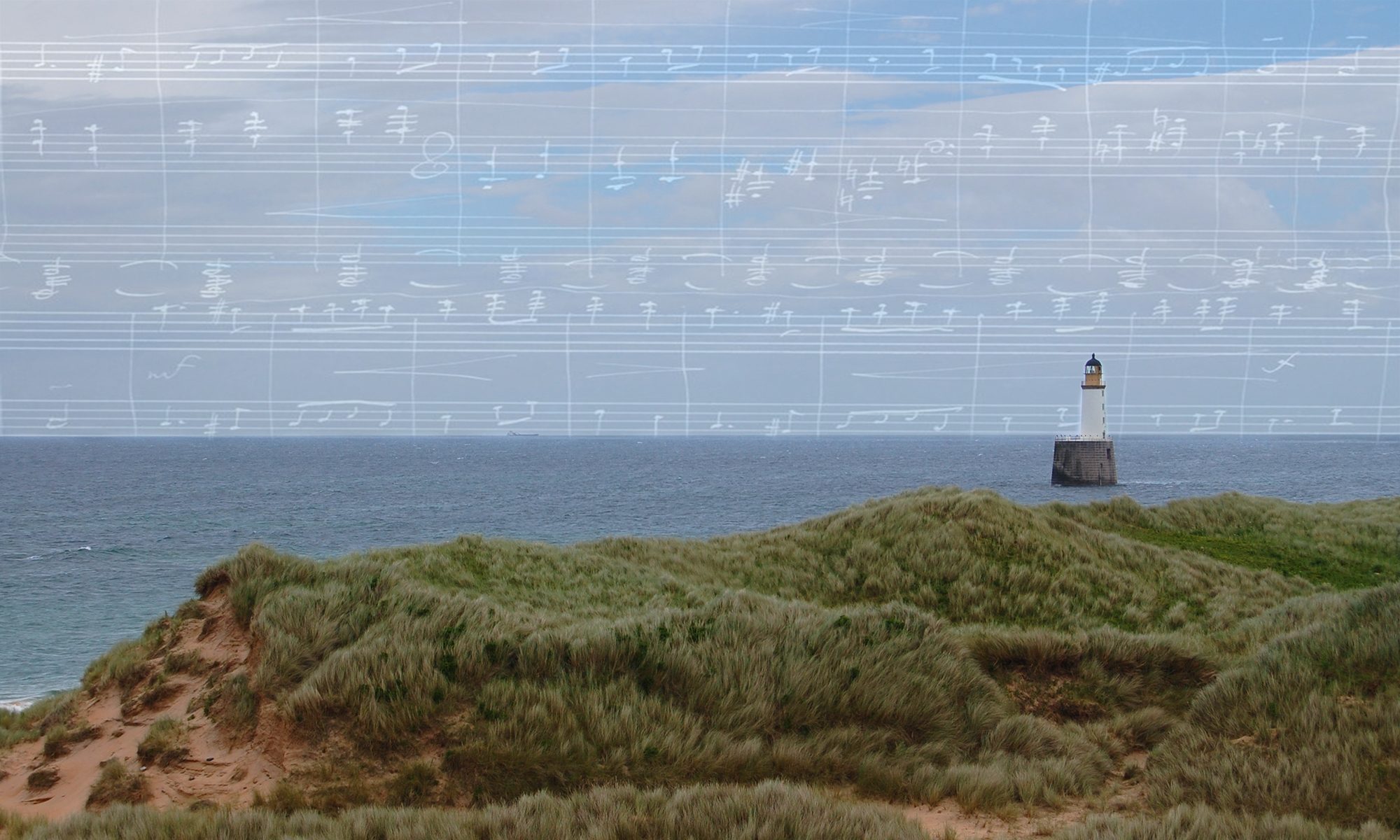Out and about in ‘Grieg country’, on a visit to the Parish of Pitsligo, Aberdeenshire, our Honorary Director made an exciting musical discovery – the existence of a musical instrument which may well have been heard by the composer Edvard Grieg’s ancestors, but whose function and manner of performance present us, today, with an intriguing mystery.
On a clear day, in the bright sea-lit air of Buchan in Aberdeenshire, you can just make out the first words of the Edvard Grieg ancestral gravestone at Rathen Old Kirkyard: ‘Here lyes the remains…’ it reads, announcing, in beautifully carved letters, the identity of the occupants of the burial beneath. What you can’t see, is that the gravestone resting on the ground was once a ‘table monument’ raised on stone legs, now sadly, lost.
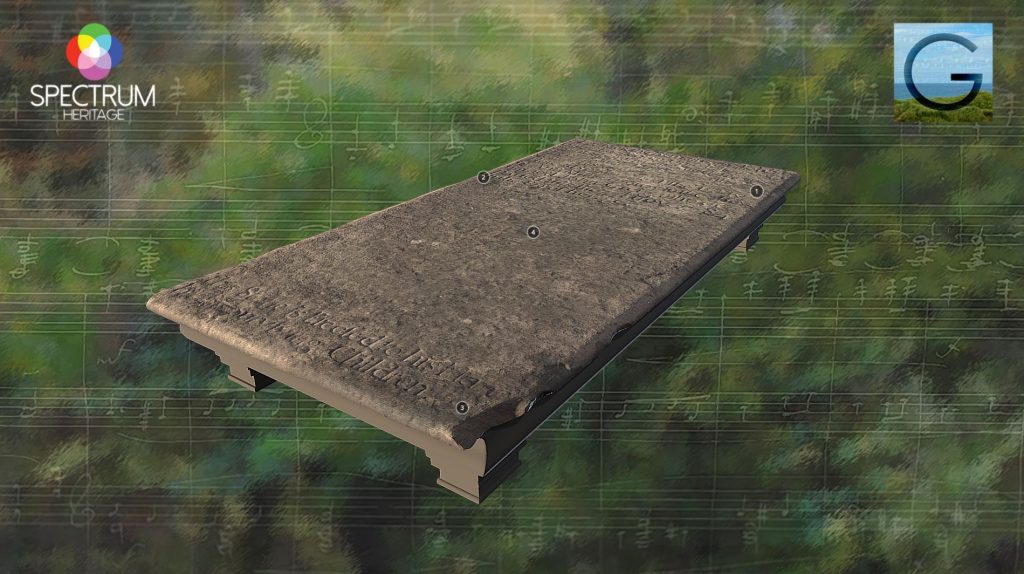
Travel a puckle miles to the north west of Rathen, to the parish of Pitsligo with its two kirks, old and ‘new’ at Peathill, its ruined castle and once fine Renaissance gardens by the sea, and you’ll see plenty table monuments standing, today, just as they stood when erected in the eighteenth century. And what a remarkable story they tell, not just of the folks they commemorate, but of the forms and rituals and even the music of their lives. For in amongst the vividly carved ‘memento mori’ mottos that cover these Pitsligo stones – how can you not ‘remember death’ amidst such a tumble of monuments! – the unmistakable contours of a musical instrument begin to intrigue the eye.
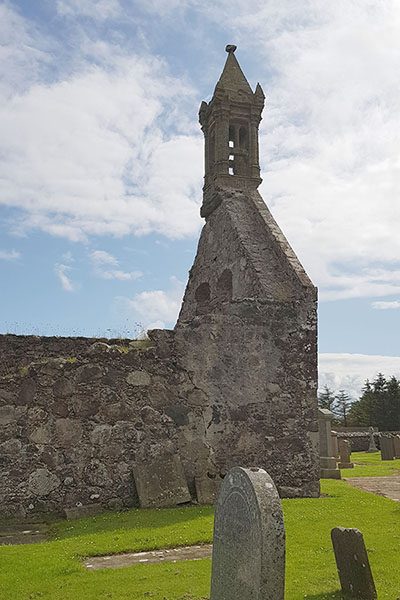
The Auld Kirk, Parish of Pitsligo, with its bellcot dated 1635 
Sitting atop Peathill, and overlooking the sea, the ‘new’ Kirk, built in the nineteenth century to serve the parishioners of Pitsligo. 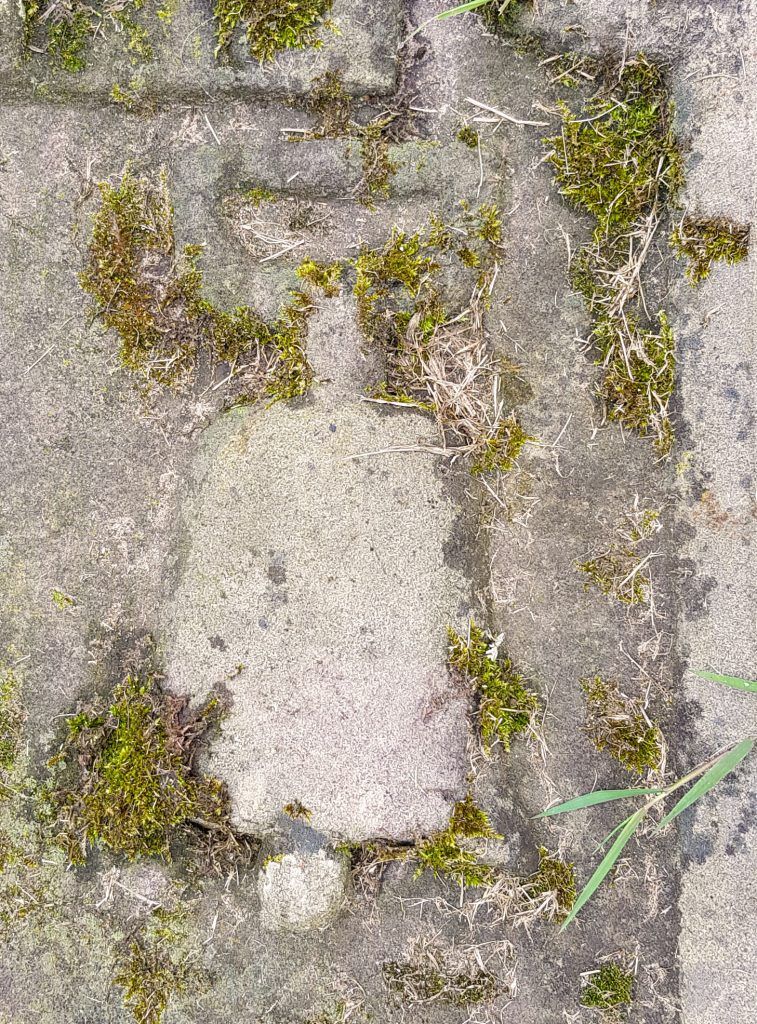
The shape of a bell amongst the moss at Pitsligo kirkyard 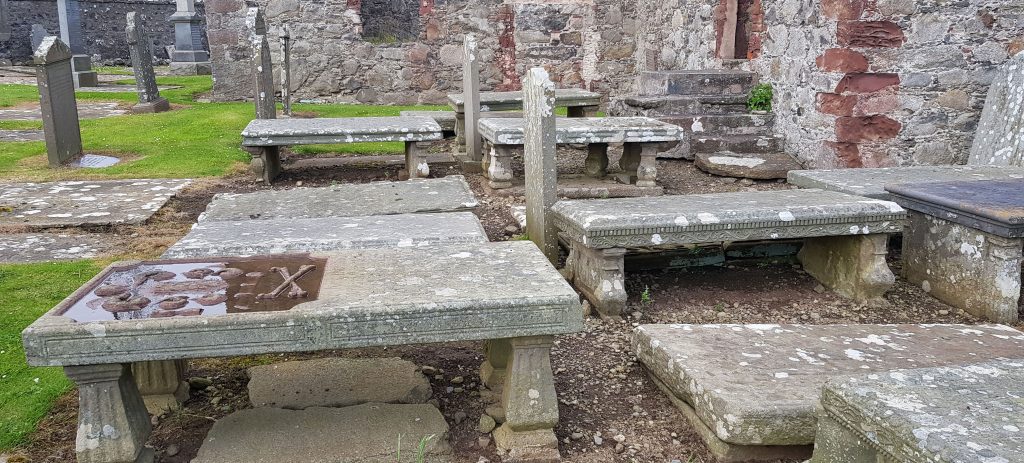
Table monuments at Peathill, Parish of Pitsligo 
‘Petsligo’ not far from ‘Rathin’ on Dutch mapmaker Joan Blaeu’s atlas of 1654 (courtesy of National Library of Scotland)
Over and over it appears, the familiar, yet strangely unfamiliar shape of a bell. For it is no grand kirk-spire instrument you see depicted in these stones, but a small portable bell of ‘announcement’, a ‘mort bell’ with distinctive handle and visible clapper. A survivor from pre-Reformation times, the ‘mort bell’ or ‘deid bell’ was designed to be carried and to sound out its sweet but solemn tone whenever there was a death in the community. The property of the ‘kirk session’, out it would go through the tracks between croft, cott and castle, and onwards to the kirk and kirkyard where the beadle – the minister’s man – ‘jowing’ or ringing it ‘for and before’ the dead, would draw the community together, first by announcing the death, and then by leading the unfortunate’s funeral procession.
Stones may be silent, yet here, huddled between the two kirks, on this ‘peat hill’ once surrounded by its huddle of crofts sloping to the sea, they seem to resound with music!
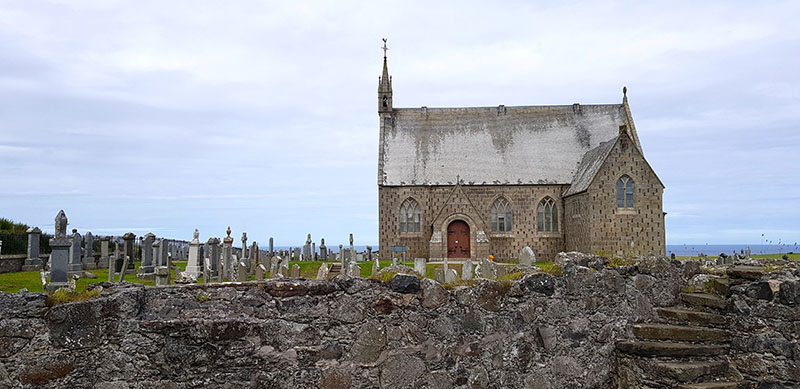
From the Auld Kirk looking to the ‘new’ – Pitsligo’s twa kirks at Peathill make a welcome navigational sight for the fisher folks of nearby Rosehearty
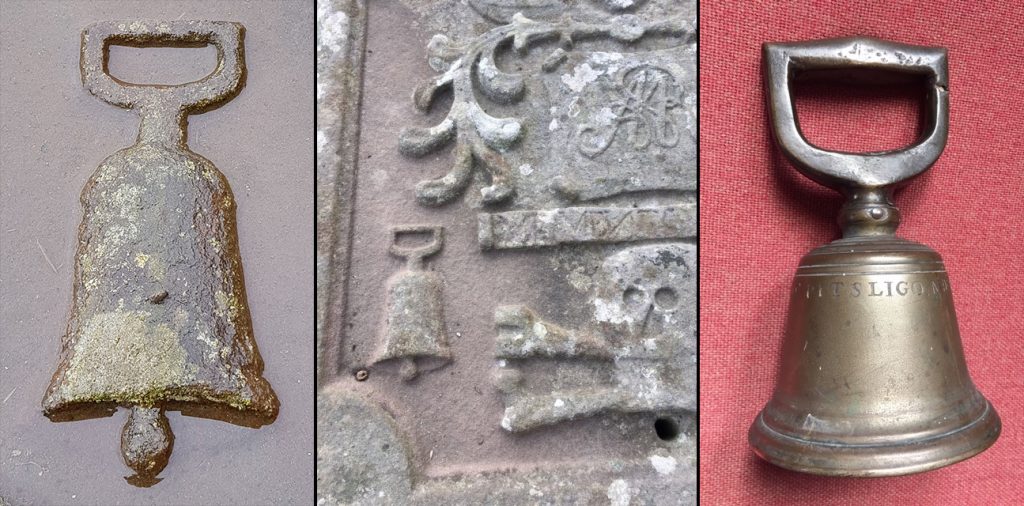
Another bell, or rather, not the bell itself, which was ‘rent’ in 1797, but the intricately carved belfry which once housed it, strikes the musical imagination at Pitsligo. Erected in 1635 by Alexander Forbes, 1st Lord Forbes of Pitsligo, ostensibly to Dutch design, and with a delicate Italianate touch, it makes an elegant statement on the gable of the old kirk, which Forbes himself, as ‘laird’ or landowner, caused be built. Alexander, like many Scots noblemen of his time, was a man of learning, with merchanting and military links to continental Europe and Scandinavia. If he survived to hear the tolling of the bell in the splendidly cosmopolitan bellcot of his commissioning, then it was not by long, for he died but a year after its construction. His funeral was a musical affair too, marked, we learn from family papers, by pageantry and the calling of trumpets.
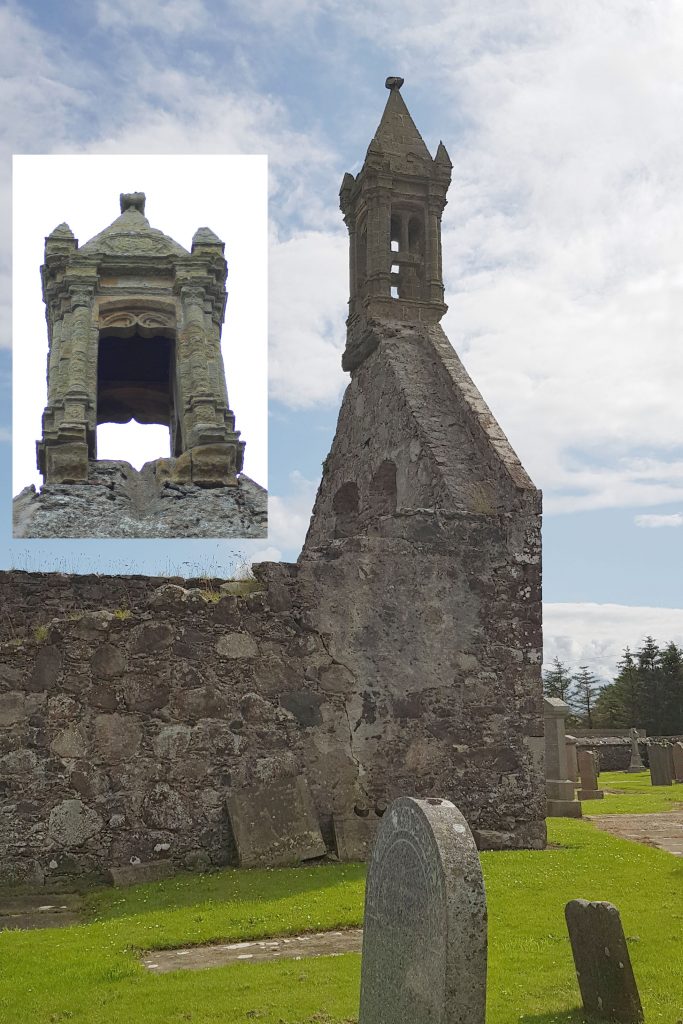
The elaborate bellcot of the Auld Kirk. Erected in 1635, by Alexander, 1st Lord Forbes of Pitsligo, it housed a large bell rung by rope from below, and almost certainly tolled for his funeral the following year. The deep track worn away by the bell rope (and, no doubt, its many replacements!), bears testimony to long usage – Alexander died young, but his bell, Pitsligo’s bell, sounded for over a century and a half.
But if Pitsligo kirkyard and its old roofless kirk seem to echo with the music of the past, so too does the interior of the ‘new’, but now disused nineteenth century parish kirk which replaced it – as I was soon to see.
Guided by Douglas Tait of Friends of Pitsligo Castle, I was lucky enough to follow my little musical trail within. Through the door and into the gloom we went, past the fine nineteenth century organ with its silvery array of pipes, past the pulpit with its carved panels brought from the old kirk, until before us, and above us, set with unashamed magnificence into the wall of the kirk, loomed the wooden ‘laird’s loft’ – a deep upper gallery once the private pew area of the Forbes family during worship. Dating from the 1630s, and like the gravestones and old belfry out in the kirkyard, it too is carved, richly carved, and a source of music to the mind. For it was here, four generations of Forbes lairds and their household sat each Sabbath, joining the congregation in the singing of a psalm – a psalm almost certainly from one of the Aberdeen-published psalters of the seventeenth century, psalters with notation, which gave Scotland sacred tunes such as ‘Bon Accord’, still sung today.
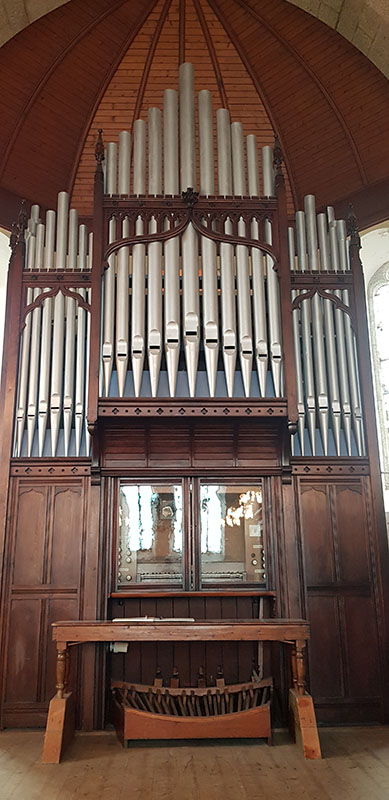
A feast for ears and eye – the organ of Pitsligo’s nineteenth century Parish Kirk makes elegant companion to the pulpit at the front 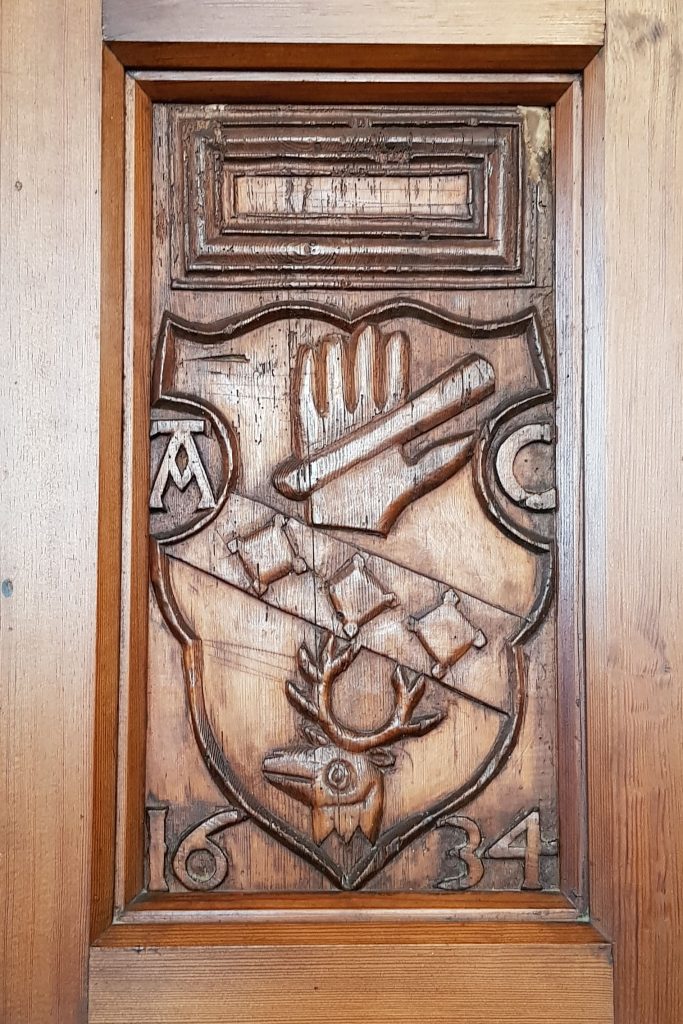
A pulpit panel from the Auld Kirk now housed in the ‘new’. The initials are those of Andrew Cant, the very first minister of the Parish of Pitsligo.
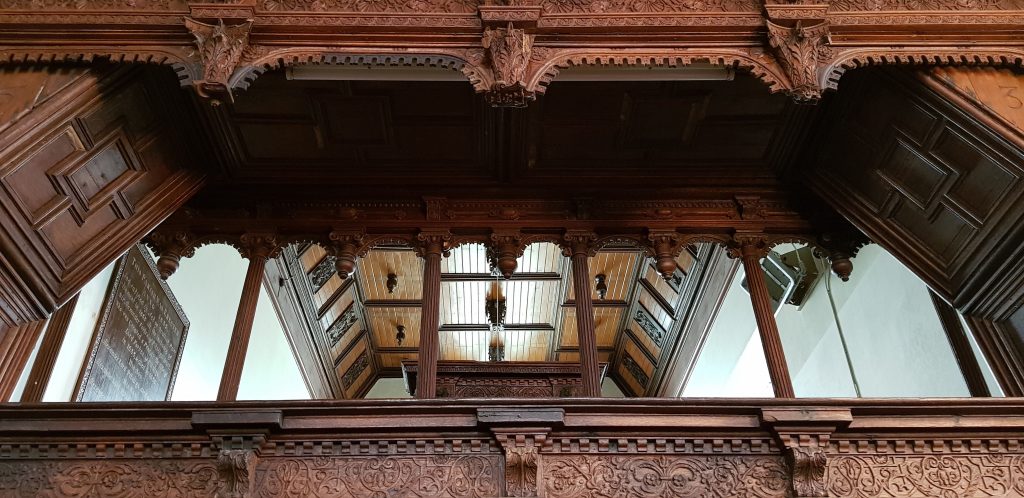
The impressive ‘Laird’s Loft’ once the private pew area of the Forbes family of Pitsligo.
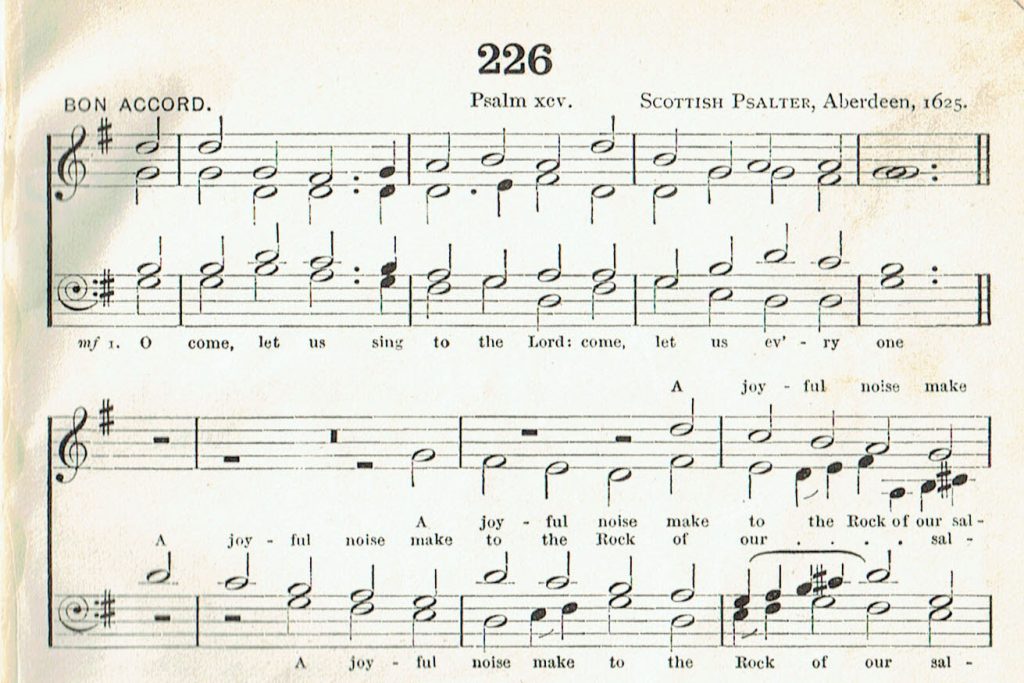
The old Scottish psalm tune ‘Bon Accord’ (motto of the City of Aberdeen), first published in Aberdeen in 1625 and here, in modern notation, still sung today. It is thought to have been composed by one of the famed masters of the ‘Sang Schule’ in the city, and was likely sung at Pitsligo.
In turn, on more secular note, perhaps we should be singing the praises of Pitsligo, for, as Douglas explained, the parish is not just famed for the physical heritage left us by the 1st Lord Forbes of Pitsligo, Alexander, but by the life and character of his great-grandson, the last and 4th Lord, also called Alexander. This Alexander Forbes was a Jacobite – a supporter of the Stuart dynasty – and a philosopher. He was active in both the 1715 and 1745 uprisings and fought at Culloden, after which he was attainted and his estate plundered and sold. His fate was the beginning of the end for Pitsligo Castle, as a residence, but as a place of reflection, perhaps only the opening of a new chapter?

Alexander, 1st Lord Forbes of Pitsligo, and his philosopher great-grandson, Alexander, the 4th Lord
Douglas has worked tirelessly, not just to try to keep grounds and buildings from further decay, but, with others, to re-envisage the site, centring on the ‘new’ kirk, as a place of education and enlightenment, a working museum of heraldry. Just looking round the castle and the two kirks, you can see why. There are some fine coats of arms to be seen, and passing glance at their armorial detail seems to make fitting conclusion to my musical trail, for it occurs to me: is it any wonder Edvard Grieg, whose ancestors toiled just 5 miles inland as the crow flies, was proud of his Scottish ‘family crest’, carrying it everywhere on his watch chain? But that’s a story for another day! And talking of stories, Douglas is reminded of an amusing anecdote attached to the parish placename.
Back in the seventeenth century, a local minister, frustrated at the frugality of the lairds of Pitsligo, Pitullie and Pittendrum – when it came to kirk repairs – is said to have dubbed their lands the three ‘pits of hell’! A biblical reference, and pun on the ancient placename ‘pit’, meaning a place of abode of the Picts who peopled the area a millennium and more ago, it is perhaps a ‘lang tale’, owing more to local humour than reality. But it’s a grand tale, and a grand measure of just how much tradition and heritage bring personality to a place.
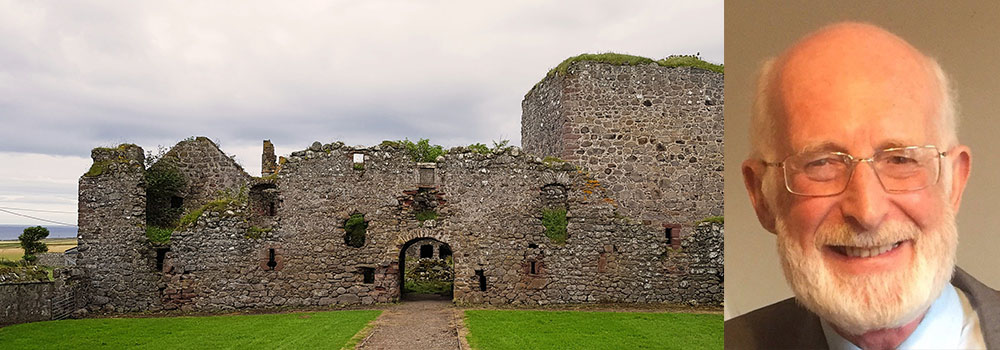
Douglas Tait of Friends of Pitsligo Castle and the imposing Renaissance ruins for which the Friends care
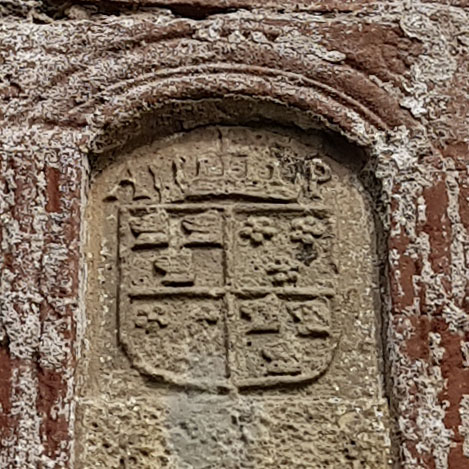
An armonial memory of the Forbes family of Pitsligo 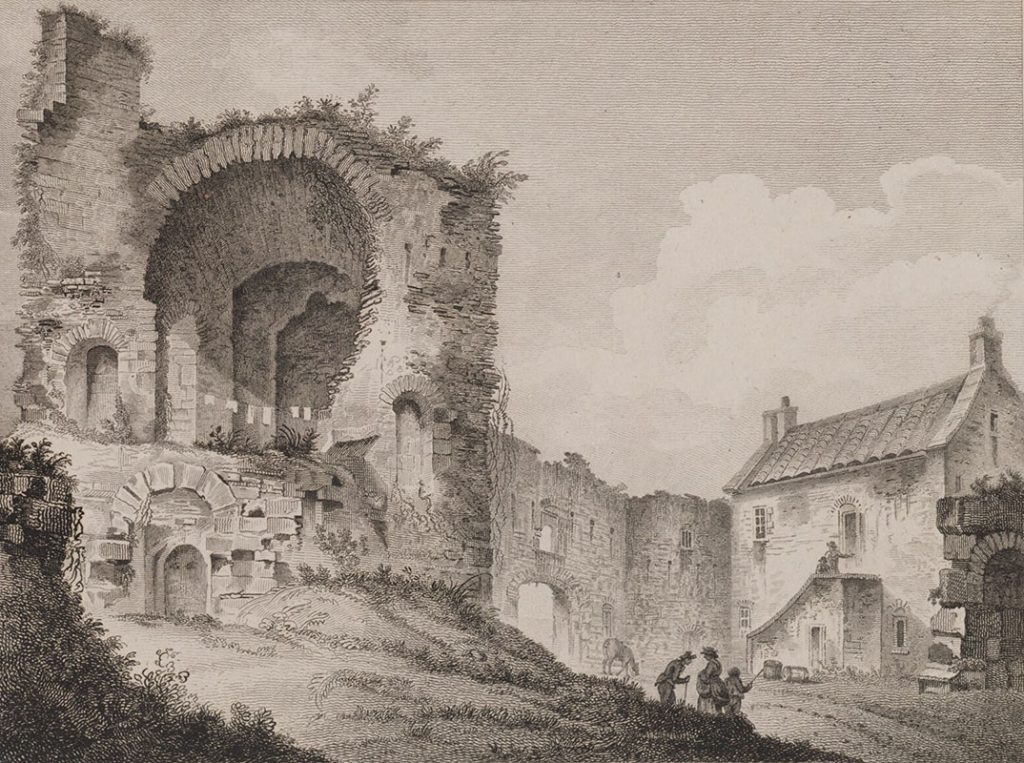
Pitsligo Castle as Romantic ruin (Scotia Depicta, 1804)
I take one last look from the castle gate and its lost, grassed-over garden, back up the hill to the two kirks. If the ‘mort bell’ sounded for the castle after Culloden, and the old kirk after it was unroofed in the twentieth century, surely it mustn’t be allowed to sound for the ‘new’ dressed-granite kirk built only 1890 and kept in continual use for a century? But, as Douglas reflects, that’s perhaps a task ‘for another generation’. It’s certainly a major undertaking, but imagine if the bell now hanging in the ‘new’ kirk could ring out a note of celebration, announcing a new future for the building and the community around it. That would be something! Admittedly, the auld abandoned craws’ nest now damping its ‘ring’ would first need ‘dingin doon’ – not down to the ‘pits of hell’, but down to the ground amongst the ‘musical’ gravestones of Pitsligo!

Author: Dr Sally LK Garden (Sep 2019)
With thanks to Douglas Tait, Friends of Pitsligo Castle, for recording in sound and image, the Pitsligo mort bell of 1742.
